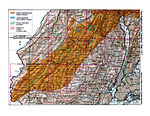Jefferson Township, New Jersey

Jefferson Township is the northernmost township in Morris County, in the U.S. state of New Jersey. As of the 2020 United States census, the township's population was 20,538, a decrease of 776 (−3.6%) from the 2010 census count of 21,314, which in turn reflected an increase of 1,597 (+8.1%) from the 19,717 counted in the 2000 census.Jefferson Township was formed as a township by an act of the New Jersey Legislature on February 11, 1804, from portions of Pequannock Township and Roxbury. The township was named after Thomas Jefferson, the President of the United States at the time the Township was created. The township is situated in the northernmost part of Morris County bordering both Passaic and Sussex counties.
Excerpt from the Wikipedia article Jefferson Township, New Jersey (License: CC BY-SA 3.0, Authors, Images).Jefferson Township, New Jersey
Compton-Gobel Road, Jefferson Township
Geographical coordinates (GPS) Address Nearby Places Show on map
Geographical coordinates (GPS)
| Latitude | Longitude |
|---|---|
| N 41.001267 ° | E -74.551188 ° |
Address
Compton-Gobel Road
Compton-Gobel Road
07438 Jefferson Township
New Jersey, United States
Open on Google Maps




